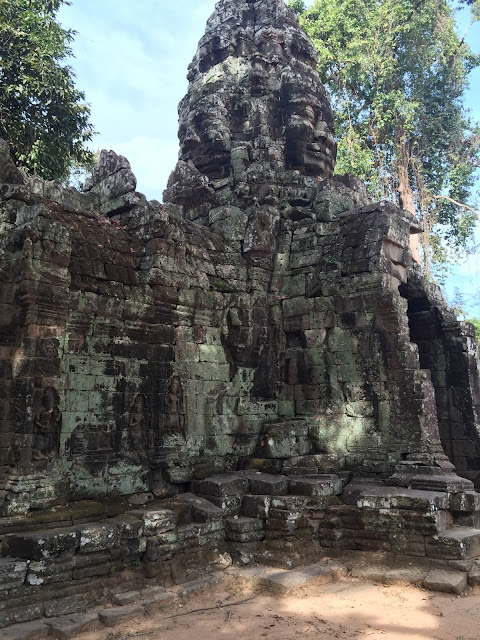Date: late 12th
to early 13th century
Style: Bayon
King: Jayavaraman VII,
enlarged by Indravarman II
Religion:
Mahayana Buddhism
Banteay
Kdei means the citadel of the monks; it was constructed at the end of the 12th
century (1181) by the king Jayavarman VII to dedicate to his teacher who taught
him about Buddhism, so it was a Buddhist monastery of the king Jayavarman VII
when he was ruled the country.
The
Banteay Kdei was flat temple stood on one ground level and surrounded by 3
laterite walls, the first wall is 500m wide by 700m long and has been with 4
gates, each tower’s gate was decorated by the 4 smiling faces of Lokasvara, so
the 4 faces represented to the 4 kindness of the king are: Charity, compassion,
sympathy and equanimity or represented to the 4 cardinal directions and on the
both sides of each we could see a large sculpture which figure of the Garuda
that was the mount of Vishu and on the top of the wall you could see the small
Buddha images were chiseled by the Hinduism when this temple was converted.
 |
| PRASAT BANTEAY KDEI |
This temple was used as an alter to offer something to the spirit, at
the end of the causeway there is an rectangular sandstone hall was used as the
dancing hall and next to the hall is the courtyard here you could see many
pieces of stone carving collapsed. The third wall is 50m wide by 63m long with
4 gates and it used as the gallery for meditation by priests and pilgrims
during the religious rites. This wall was originally encircled by another moat
as we see it in the courtyard, the courtyard of this wall you could see some
towers which were connected by the halls amongst the towers, there are 2
libraries on the left and the right hand side of the main tower that opened to
the west, the main tower was originally opened to the 4 cardinal directions and
was installed the Buddha statue.

























No comments:
Post a Comment